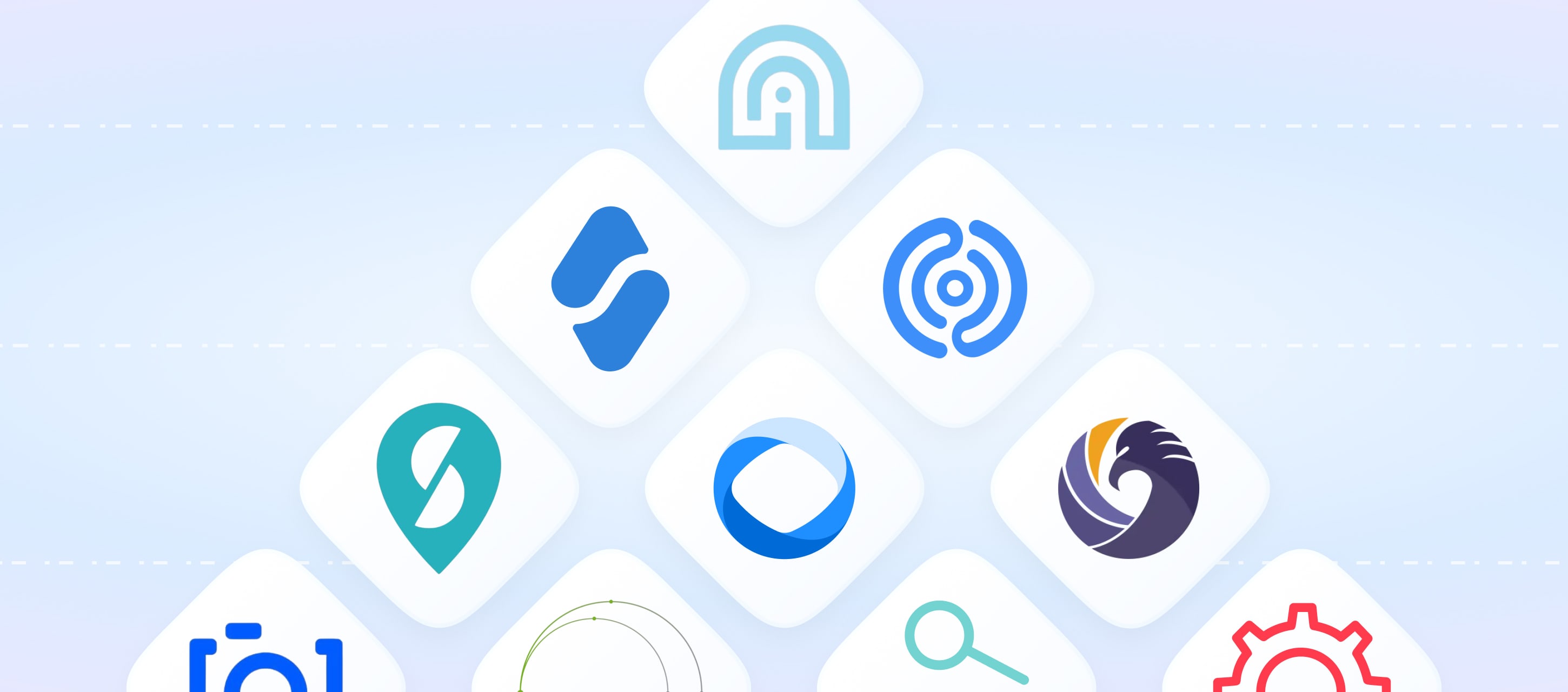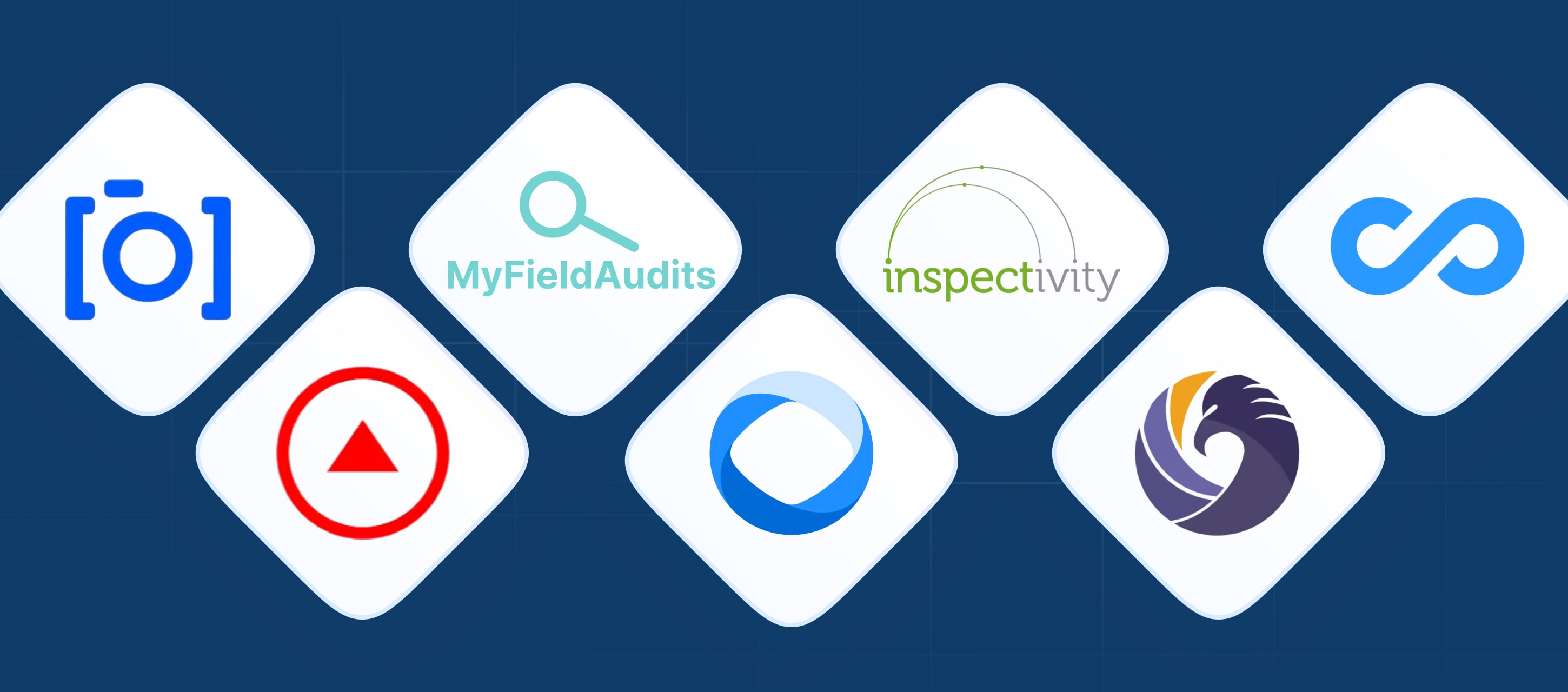You’re halfway through an inspection and something’s off – the checklist is outdated. Again.
Now you’re re-entering data, double-checking steps, and losing time you don’t have. For frontline teams, it’s a frustrating slowdown.
But for the business? It’s a bigger problem: missed compliance targets, slower site progress, and gaps in documentation. That could cost real money during audits or reviews.
Inspection management software is built to fix that. In this guide, we’ll break down what it does, what features you need to look for, and how to choose a tool that fits your operations.
Contents:
What Is Inspection Management Software?
Inspection management software refers to digital tools used to plan, assign, complete, and review inspections.
It takes all the repetitive parts from inspections – like task scheduling, documentation, approvals, and report building – and automates them. Inspection tasks are pulled into one system that’s easy to manage and to keep up with.
dThe software helps field teams follow procedures, stay compliant with regulatory bodies, including OSHA (Occupational Safety and Health Administration), EPA (Environmental Protection Agency) DOT (Department of Transportation), etc., and track actions tied to local and internal safety protocols.
It’s a favorite in industries where inspections happen nonstop, like construction, energy, manufacturing, and healthcare.
Key Features of Inspection Management Software
Inspection software can come in different forms – each with different strengths.
Common types include industry-specific tools (e.g., for construction, healthcare, oil & gas), mobile apps designed for offline field data capture, EHS suites combining inspections with incident management and training, ERP/CMMS modules as part of larger enterprise systems (like SAP or Maximo), etc.
But no matter the type, there are certain inspection management software features you’ll find in most tools. What unites them is that they should be able to support more efficient, accurate, and organized field inspections.
| Feature | What your team can do with it |
|---|---|
| Digital Checklists | Build checklists that match your inspection steps. Add required fields, dropdowns, photo evidence, e-signatures, and timestamps to align with site-specific protocols. |
| Offline Mode | Collect data in the field offline. Forms and entries sync automatically when you’re back in range. |
| Scheduling | Assign inspections ahead of time, set repeat intervals, and trigger reminders. |
| Automated Approval Management | Route completed inspection forms to supervisors, compliance officers, or auditors automatically. |
| Barcode and RFID Scanning | Scan equipment and materials during inspections to make sure you’ve got the right ones. |
| Data Analysis and Root Cause Analysis (RCA) | Spot patterns in your inspection data and dig into the reasons behind them. |
| Non-Conformance Tracking and Corrective and Preventive Action (CAPA) Workflows | Log and follow up on issues like PPE defects, electrical faults, or structural hazards. Assign responsibilities with due dates, and track resolution. |
| Live Dashboards | Monitor active inspections across teams, projects, and sites in real-time. |
| Automated Reports | Turn your field data into clear, ready-to-send reports for internal use or external audits. |
| Secure Cloud Storage | Safely store and retrieve inspection history, images, and reports from any device. |
| Role-Based User Access | Control who can see, edit, or manage inspection data across teams and departments. |
| Integrations | Connect your inspection data with tools you already use, like Dropbox, Power BI, and more. |
Keep in mind that the market is evolving fast, and new demands are shaping what inspection software needs to deliver. Tools are moving toward voice-to-text field input, geofencing for location-based inspection prompts, and automated compliance mapping to help teams stay ahead of ever-changing regulations.
For field inspection management, that means we can expect features like automated risk scoring, AI-driven anomaly detection in images, smart sensor integrations (IoT), and predictive scheduling in the nearest feature.
Read More Read More 10 best Fieldwire alternatives for field inspections in 2025
Inspection Management Software Benefits
The real value of inspection software isn’t in merely digitizing forms. In the end, its goal is to improve decision-making and safety across your entire operation.
These benefits show up not only in the field, but also in reporting rooms, compliance reviews, and executive dashboards.
- Consistency. Standardized checklists and automated workflows keep every inspector on the same track.
- Accuracy. Inspectors enter data onsite, and required fields make sure everything important is captured while it’s still fresh.
- Time savings. Mobile checklists, built-in logic, and automated workflows help you complete inspections faster.
- Efficiency. Reports build themselves from the data captured onsite.
- Instant Distribution. As soon as your inspections are done, results get pushed in real-time to other systems or team members.
- Access. Digital audit trails are easy to pull up for safety meetings, internal reviews, or surprise audits.
- Reliable Documentation. Photo documentation and time-stamped entries give you proof of what was inspected and how issues were solved.
- Accountability. Hazards are more likely to get fixed when corrective actions are tracked from start to finish.Together, these gains help make your inspections faster and safer. And once it’s done, your team starts reducing risk and improving performance.
Together, these gains help make your inspections faster and safer. And once it’s done, your team starts reducing risk and improving performance.
How much time and money could inspection automation save you?
How to Choose Inspection Management Software
Cost tends to be where this conversation starts. It might not be the deciding factor, but it’s usually the first one on everyone’s mind (and a quick way to narrow your options).
As you work through the numbers, think carefully about what the best inspection management software is worth to your team. Decide which features you absolutely need, what results you’re expecting, and how you’ll explain the cost to whoever’s signing off on it.
Once you’ve got the budget in view, think about usability. If the software’s hard to use – or feels like extra work – it’s not going to do much good. The interface needs to feel familiar to your field teams from the start.
Next consideration should be support. There are some vendors that’ll guide you through how to configure things like LOTO checklists, daily site inspections, or environmental reporting workflows. Others will send you a link and wish you luck.
If you’ve got a full team handling roll out, you’ll probably be fine either way. But if you don’t, the difference in support might come back to hurt you.
Then there’s integration. You might have lots of systems you’d like to connect, like Dropbox for compliance documents, Power BI for safety metrics, or asset management systems for barcode scanning.
If the inspection management software you’re considering makes you pause work just to get it integrated, that’s a red flag. You want software that fits in with what you’ve already built without any downtime or data issues.
Same goes with security. The tool you choose should protect your data, hold up under audit, and follow the right industry standards. ISO certifications are a good starting point, but don’t be afraid to ask vendors for specifics.Lastly, think about scale. You don’t want to start over every time HSE regulations or company policies change. Your software should let you easily adjust your workflows for new types of inspections, teams, and regions.
How to Implement Inspection Management Software
Implementation isn’t something you should rush. But it shouldn’t be painful either. With smart planning and the right steps, it’s totally possible to make the process optimal and start seeing ROI faster.
Step 1: Get a Clear Picture of What’s Happening
Start by taking a good, honest look at how your inspections run today.
Involve the people closest to the process: your field teams, supervisors, safety managers, and compliance experts. Get them to tell you exactly what’s working and what’s not.
This will give you a clear picture of what actually needs fixing, setting you up nicely for step two.
Step 2: Set Goals You Can Measure
Once you know what your current pain points are, you can set specific goals to address them directly.
These goals should be tied to outcomes you can measure. And no, “go digital” or “improve efficiency” isn’t enough. Set clear benchmarks, like “reducing OSHA 300 log completion time by 50%” or “cutting inspection turnaround time from 3-days to same-day delivery.”
Be realistic and specific about what you can achieve.
Step 3: Test It with a Small, Focused Pilot
There’s no need to launch across every site right away. Pick one team, one location, or one inspection workflow. Get the basics right: digitize the forms, set up automation for the obvious steps, and test it all in the field.
Feedback from that first group will help you improve the setup and avoid scaling problems too soon.
Step 4: Train Your Teams and Communicate Clearly
After you’ve tested the system, worked out the rough spots, and feel good about the setup, it’s time to bring in more people. Start training the teams who’ll be using the tool, keeping it focused on what each group needs to know.
And don’t forget to communicate why you’ve adopted the software. Motivation comes from purpose, not instructions.
Step 5: Keep the Feedback Loop Open
Getting your software live is great, but keeping it useful takes work. And that only happens if you listen to your team.
So, make it easy for your field techs, HSE teams, and supervisors to share honest feedback. Set up something simple and consistent, like a monthly check-in, a shared Google doc, or a Slack thread. The important part is showing how their input shapes your system.
Step 6: Track and Share Your Progress
When your system starts delivering results, talk about them.
If inspection times are down by 43%, like they were for Consolidated Power Projects Australia, say so. If teams are making fewer mistakes or following through on corrective actions more consistently, point that out too.
You don’t need to hold a big company-wide meeting, but find ways to discuss the impact. Really make time to talk about your progress, and share how far you’ve come.
With Fluix, you’ll have plenty to celebrate. Our software is built for busy teams who need inspection results fast. It’s quick to set up, easy to use onsite, and backed by onboarding support to help you hit the ground running.
From time saved to tasks completed, Fluix makes your wins easy to spot.







